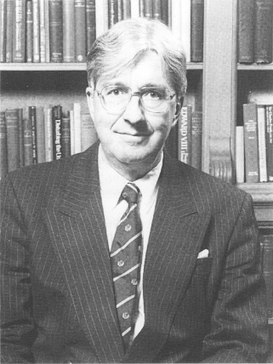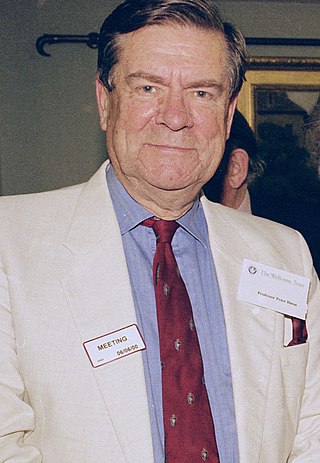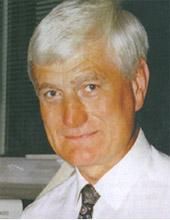Related Research Articles

Pediatrics also spelled paediatrics, is the branch of medicine that involves the medical care of infants, children, adolescents, and young adults. In the United Kingdom, pediatrics covers many of their youth until the age of 18. The American Academy of Pediatrics recommends people seek pediatric care through the age of 21, but some pediatric subspecialists continue to care for adults up to 25. Worldwide age limits of pediatrics have been trending upward year after year. A medical doctor who specializes in this area is known as a pediatrician, or paediatrician. The word pediatrics and its cognates mean "healer of children", derived from the two Greek words: παῖς and ἰατρός. Pediatricians work in clinics, research centers, universities, general hospitals and children's hospitals, including those who practice pediatric subspecialties.

Spanking is a form of corporal punishment involving the act of striking, with either the palm of the hand or an implement, the buttocks of a person to cause physical pain. The term spanking broadly encompasses the use of either the hand or implement, the use of implements can also refer to the administration of more specific types of corporal punishment such as belting, caning, paddling and slippering.
The American Academy of Pediatrics (AAP) is the largest professional association of pediatricians in the United States. It is headquartered in Itasca, Illinois, and maintains an office in Washington, D.C. The AAP has published hundreds of policy statements, ranging from advocacy issues to practice recommendations.

Baby colic, also known as infantile colic, is defined as episodes of crying for more than three hours a day, for more than three days a week, for three weeks in an otherwise healthy child. Often crying occurs in the evening. It typically does not result in long-term problems. The crying can result in frustration of the parents, depression following delivery, excess visits to the doctor, and child abuse.

Neonatal jaundice is a yellowish discoloration of the white part of the eyes and skin in a newborn baby due to high bilirubin levels. Other symptoms may include excess sleepiness or poor feeding. Complications may include seizures, cerebral palsy, or kernicterus.
Hemoglobin C is an abnormal hemoglobin in which glutamic acid residue at the 6th position of the β-globin chain is replaced with a lysine residue due to a point mutation in the HBB gene. People with one copy of the gene for hemoglobin C do not experience symptoms, but can pass the abnormal gene on to their children. Those with two copies of the gene are said to have hemoglobin C disease and can experience mild anemia. It is possible for a person to have both the gene for hemoglobin S and the gene for hemoglobin C; this state is called hemoglobin SC disease, and is generally more severe than hemoglobin C disease, but milder than sickle cell anemia.
The Denver Developmental Screening Test (DDST) was introduced in 1967 to identify young children, up to age six, with developmental problems. A revised version, Denver II, was released in 1992 to provide needed improvements. These screening tests provide information about a range of ages during which normally developing children acquire certain abilities and skills. By comparing a child’s development to the developmental age ranges in this tool, it allows providers to identify young children with developmental problems so that they can be referred for help.

Sickle cell disease (SCD), also simply called sickle cell, is a group of hemoglobin-related blood disorders typically inherited. The most common type is known as sickle cell anemia. It results in an abnormality in the oxygen-carrying protein haemoglobin found in red blood cells. This leads to a rigid, sickle-like shape under certain circumstances. Problems in sickle cell disease typically begin around 5 to 6 months of age. A number of health problems may develop, such as attacks of pain in joints, anemia, swelling in the hands and feet, bacterial infections, dizziness and stroke. Long-term pain may develop as people get older. The average life expectancy in the developed world is 40 to 60 years. It often gets worse with age. All the major organs are affected by sickle cell disease. The liver, heart, kidneys, gallbladder, eyes, bones, and joints also can suffer damage from the abnormal functions of the sickle cells, and their inability to flow through the small blood vessels correctly.

The Avon Longitudinal Study of Parents and Children (ALSPAC), also known as Children of the 90s and formerly the Avon Longitudinal Study of Pregnancy and Childhood, is a cohort study of children born in the former county of Avon, England during 1991 and 1992. It is used by researchers in health, education and other social science disciplines.
The Growing Up Today Study (GUTS) is an ongoing collaborative research project between researchers at the Harvard T.H. Chan School of Public Health and Brigham and Women's Hospital in Boston, Massachusetts. Established in 1996 in the United States, the study collects data annually from over 26,000 participants in order to evaluate the factors that influence weight change and health throughout the life cycle. The participants are children of the women who enrolled as participants in the second cohort of the Nurses' Health Study. Established in 1976, the Nurses' Health Study has collected data from 238,000 nurse participants, making it one of the largest and longest running investigations of factors that influence women’s health and risk for disease. Combined, the Growing Up Today Study and the Nurses’ Health Study can be considered a cross-generational super-study, leading to new insights and landmark findings in the field of public health research.
Graham Roger Serjeant is a British medical researcher who studied sickle-cell disease in Jamaica, setting up screening programmes and a cohort study from birth. He directed the MRC Laboratories at the University of the West Indies and instituted the Sickle Cell Trust (Jamaica), a local charity. He has written four books and approximately 500 papers on sickle-cell disease. His work addressed the variability of sickle-cell disease with special emphasis on developing low-cost models of management suitable to countries with large numbers of patients and limited resources.
The History of Modern Biomedicine Research Group (HoMBRG) is an academic organisation specialising in recording and publishing the oral history of twentieth and twenty-first century biomedicine. It was established in 1990 as the Wellcome Trust's History of Twentieth Century Medicine Group, and reconstituted in October 2010 as part of the School of History at Queen Mary University of London.

Edward Osmund Royle Reynolds, was a British paediatrician and Neonatologist who was most notable for the introduction of new techniques intended to improve the survival of newborns, especially those with respiratory failure, and for a series of papers regarding the value of techniques such as ultrasound imaging, nuclear magnetic resonance spectroscopy, and near infrared spectroscopy in determining the development and response to injury of the infant brain after birth.

Peter MacNaughton Dunn was an English paediatrician. Dunn was most notable for introducing into the UK the Gregory box in 1971, that provides Continuous positive airway pressure in the treatment of infant respiratory distress syndrome of the newborn and conducting research into Hip dysplasia and fetal adaptation to extrauterine life. Dunn was also notable for being known for founding the charity association British Association of Perinatal Medicine.
Dr Linda Buell Tyfield is a clinical scientist.
Kristina Reiss Olson is a psychologist and a professor at Princeton University. She is known for her research on the development of social categories, transgender youth, and variation in human gender development. Olson was recipient of the 2016 Janet Taylor Spence Award from the Association for Psychological Science for transformative early career contributions, and the 2014 SAGE Young Scholars Award. Olson received the Alan T. Waterman Award from the National Science Foundation in 2018, and was the first psychological scientist to receive this prestigious award honoring early-career scientists. Olson is a member of the 2018 cohort of MacArthur fellows.
Andrew Wilkinson is a British paediatrician who is a Professor Emeritus of Paediatrics and Perinatal Medicine at All Souls College, Oxford. Wilkinson is most notable for being an international authority in neonatology and a lead author of the Standards of Care for NICU and NICE guidelines on retinopathy of prematurity.
Neil McIntosh is a British and Scottish paediatrician and neonatologist who was most notable for being the leading writer of a pivotal article that defined standards of ethical behaviour in paediatrics, including withdrawal of newborn intensive care. McIntosh is emeritus professor of Neonatology and Child Life and Health at the University of Edinburgh. During McIntosh's career he has researched mineral metabolism in preterm infants, computerised acquisition of physiological data in Neonatal Intensive Care Nursing.

Melissa Anne Wake is a New Zealand paediatrician and scientific director of the Generation Victoria initiative, which states the aim of creating very large, parallel whole-of-state birth and parent cohorts in Victoria, Australia, for Open Science discovery and interventional research. She is group leader of the Murdoch Children's Research Institute's Prevention Innovation Research Group and holds professorial positions with the University of Melbourne and the University of Auckland.

Henry Lewis Halliday was a British-Irish paediatrician and neonatologist. In 2021, Halliday was awarded the James Spence Medal for research into neonatology, for coordinating two of the largest neonatal multicentre trials for prevention and treatment of a number of neonatal respiratory illnesses and for a breakthrough in the development of a new lung surfactant that brought relief to very small babies suffering from infant respiratory distress syndrome (RDS).
References
- ↑ "Professor Alan Emond". Bristol Medical School: Population Health Sciences. University of Bristol. Retrieved 1 August 2020.
- 1 2 "Professor Alan Emond". The Royal College of Paediatrics and Child Health. The Royal College of Paediatrics and Child Health. Retrieved 1 August 2020.
- 1 2 "An interview with… Alan Emond". Bristol Institute of Learning and Teaching. Bilt Online. 17 June 2019. Retrieved 2 August 2020.
- ↑ Overy, C; Reynolds, LA; Tansey, EM. "History of the Avon Longitudinal Study of Parents and Children , C 1980-2000". Queen Mary University of London. History of Modern Biomedicine Research Group. Retrieved 2 August 2020.
- ↑ Overy, C; Reynolds, LA; Tansey, EM. "History of the Avon Longitudinal Study of Parents and Children , C 1980-2000". Queen Mary University of London. History of Modern Biomedicine Research Group: 96. Retrieved 2 August 2020.
- ↑ "About us". Centre for Academic Child Health. University of Bristol. Retrieved 10 August 2020.